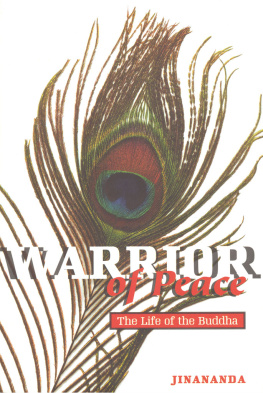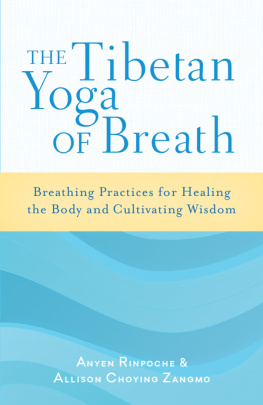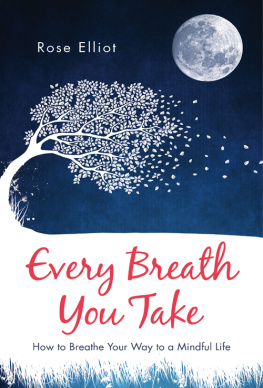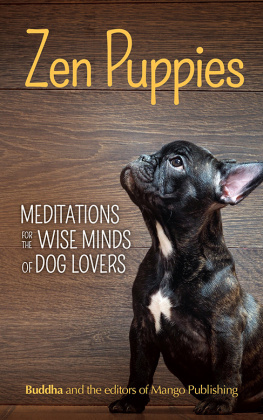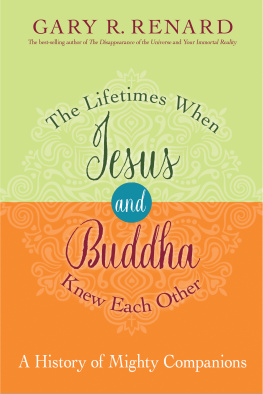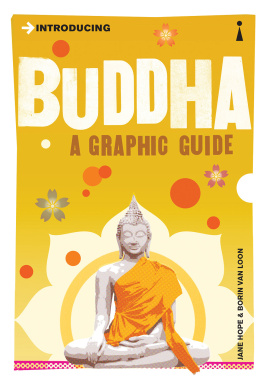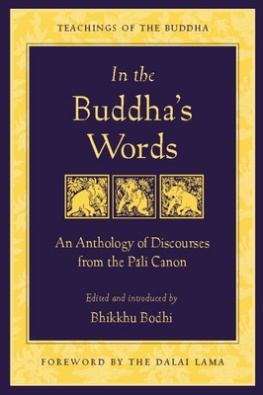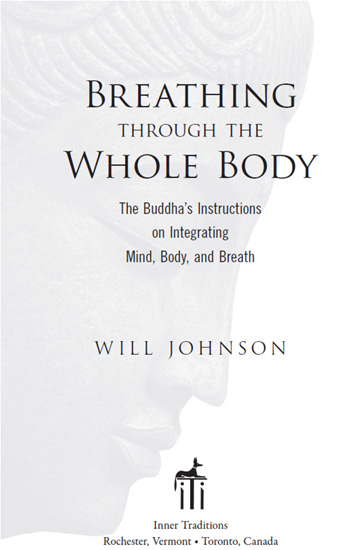
To Asclepiades

As always, the good folks at Inner Traditions have been extremely helpful and supportive in shepherding this little book from my computer to your hands and eyes. Over the years, theyve become friends as much as professional contributors. Special thanks go to Jamaica Burns Griffin, Jon Graham, Jeanie Levitan, and Nancy Yeilding.
BREATHING THROUGH THE WHOLE BODY
I love every word! Thank you so much for bringing forth such a succinct and glowingly accurate account of the central role that body wisdom, somatic experiencing, plays in the process of awakening. It is a how to do it book for all of us on this road to realizing our true nature.
ROBERT HALL, BUDDHIST TEACHER AND
COFOUNDER OF THE LOMI SCHOOL
... FROM THE SATIPATTHANA SUTTA
go to a quiet place in the wilderness, the forest,
or even a room in an empty building
sitting down in a posture of meditation,
keeping the spine upright and erect,
begin by observing the breath in the front of the body
remain aware as you breathe in
remain aware as you breathe out
notice if the breath is long or short
as you breathe in, breathe in through the whole body
as you breathe out, breathe out through the whole body
feel how the breath calms and heals the body
like a skilled potter watching clay turn on a wheel
notice how each inhalation turns into an exhalation
only to turn back again into an inhalation
over and over and over again
INTRODUCTION
From our very first inhalation that signals entrance into the world to our very last exhalation through which we bid the world a final farewell, breath is with us our entire life. It is our constant and most reliable companion (our heart may skip a beat from time to time, but we never miss a breath), never abandoning us or leaving our side. It provides usmoment by moment, breath by breathwith the most vital nourishment we need to keep our body alive. Take food away from us, and we can live for several months. Take water away from us, and we can survive for several days. Cut off the life-sustaining oxygen in the air we breathe for even a few minutes, and our body dies. Breathing in... breathing out...
So vital to our survival is the action of breathing that, much like the systolic and diastolic beating of our heart, its rhythmic repetitions of inhalation and exhalation keep occurring whether or not were aware of them. While we have no choice but to breathe, we have the ability to affect how we breathe. We can slow the breath down. We can speed it up. We can cause it to become fuller or slighter, stronger or weaker. We can consciously yield to its primal impulse and rhythms, or we can unconsciously constrain it and hold back its force.
Breath can flow freely, like a stream in spring, or it can become stagnant, its current jammed. Chronic tensions in the body and contractions in the mind interfere with the free flow of breath. Like logjams in a river, they can slow breath down to a trickle. Surrendering to breaths current brings more vibrancy to the body and peace to the mind. Bracing against its current keeps the body sluggish and the mind overactive. Either pattern can keep the body alive, but only one keeps the body happy.
Because restrictions to breath can be eased and altered, and because this alteration can so dramatically affect not only the vibrancy of the body but the condition of the mind itself, spiritual teachersfrom times too ancient to have been recorded right up to the present dayhave relied on different techniques and practices of breathing to help students gain insight. Many of the techniques are energizing, others deeply relaxing. Some mold the breath, forming it into specific shapes and patterns; others just watch it, accepting it exactly as it is. All of them connect us with our body. The common denominator of the many different traditions and schools of Buddhism, each with their own unique approach to practice, is their shared interest in the breath. Starting 2,500 years ago with the seminal teachings of the historical Buddha, the Indian prince Siddhartha Gotama, and moving through every intervening century since, Buddhist teachers from all traditions have been telling us, in one form or another, to breathe and be aware.
The three historical suttas (or texts) that speak of the breath most prominently, and whose statements have been directly attributed to the Buddha himself, are the Satipatthana Sutta, the Anapanasati Sutta, and the Kayagatasati Sutta. Here can be found the Buddhas actual instructions on meditation, and these instructions are as germane today as when they were first uttered 2,500 years ago. All three of these texts include specific instructions about breath, and the breath practices in many of our contemporary Buddhist schools are still based on interpretations of the words in these texts.
The principal instructions on meditating on the breath in all three of these suttas are fundamentally identical. The meditator is encouraged to go to a quiet place where he or she wont be too disturbed or distracted, sit down in such a way that the spine remains erect, and begin to observe the passage of breath at the front of the body. The two most common contemporary interpretations of the opening instructions in these suttas tell the meditator to keep his or her mind completely focused and concentrated on the action of the breath as it can be observed and felt in one of two very specific, isolated spots, both at the front of the body: the area of the nostrils (where one can observe and feel the breath as it enters and leaves the body) or the abdomen (where one can pay attention to how the action of breath causes the belly to rise and fall, expand and contract, on every inhalation and exhalation).
Through this kind of focused attention, mind stays more tethered to the present moment. Breathing in... breathing out... Indeed, one of the primary purposes of the practice is to calm the tendency of the mind to jump around from thought to thought so it can remain more present and aware. Thoughts in the mind are almost entirely either reminiscences about the past or projections into the future, andas Buddhist teachers are fond of pointing outthe past and the future have no existential reality other than as thoughts in the present moment. Only the experience of this moment has a claim to being real (it is certainly the only moment that is directly experienceable), and the Buddha discovered that grounding our awareness in the ever-changing reality of the present moment keeps us from getting tangled up in thought realms that all too easily lead to distortions of perception.
Curiously, however, there is another statement about the breath in all three of these suttas that is often overlooked in most contemporary Buddhist schools. Instead of just observing the breath as it acts on one small, isolated part of the body, the Buddha also quite clearly encouraged his students to do the following:
as you breathe in, breathe in through the whole body
as you breathe out, breathe out through the whole body
While this passage hasnt found its way into practice anywhere nearly so prevalently as the more isolating instruction to observe the activity of breath in one specific part of the body to the exclusion of all others, it has been the subject of much debate among Buddhist scholars and teachers. While some scholars insist that the passage refers to the
Next page

